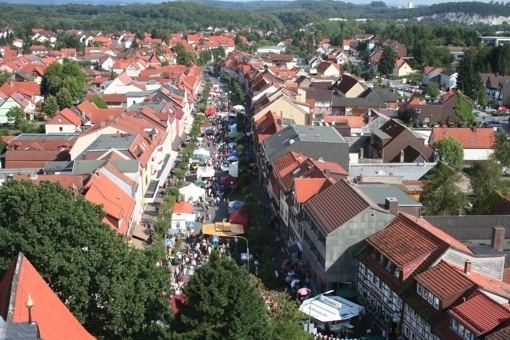District Göttingen Postal codes 37441 Area 33.13 km² Local time Tuesday 1:03 AM | Time zone CET/CEST (UTC+1/+2) Dialling codes 05523, 05525 Population 7,830 (31 Dec 2008) Postal code 37441 | |
 | ||
Weather 7°C, Wind SW at 27 km/h, 97% Humidity Points of interest Harzfalkenhof, Ravensberg, Grenzland‑Museum, Märchengrund Bad Sachsa, Heimatmuseum Bad Sachsa | ||
Romantischer winkel spa and wellness resort germany bad sachsa
Bad Sachsa is a town in the district of Göttingen, in Lower Saxony, Germany. The town was one of the few municipalities in West Germany that imported electric power from former East Germany. This was done via Neuhof Substation.
Contents
- Romantischer winkel spa and wellness resort germany bad sachsa
- Map of 37441 Bad Sachsa Germany
- Stadt bad sachsa
- Geography
- History
- Winter Sports
- Sights
- Traffic connections
- Born in Bad Sachsa
- People associated with Bad Sachsa
- References
Map of 37441 Bad Sachsa, Germany
Stadt bad sachsa
Geography
Bad Sachsa is situated in the southern Harz, approximately 15 km south of Braunlage, and 25 km southeast of Osterode am Harz.
History
The oldest existing document in which Sachsa is mentioned was written in 1229. The settlement officially gained town status in 1525. Tourism started around 1860. After the town had been recognized as a health resort by the government in 1905 the name was changed to "Bad Sachsa" with "Bad" meaning spa.
Bad Sachsa is known for being the town where Berthold Maria Schenk Graf von Stauffenberg and his four siblings were sent by the Nazis in 1944, following the failed 20 July plot. Their father was executed and their pregnant mother was interned in a concentration camp with two elders. The Stauffenberg children lived in Bad Sachsa during 1944-45. Other families of the executed officers were imprisoned here. All were left there without their parents and with changed names.
Winter Sports
Ravensberg Mountain (660 metres) offering a scenic view of the whole Harz is used for various winter sports.
Sights
Traffic connections
Bad Sachsa is easily accessible by train as it has a railway station on the South Harz Railway. The neighbouring towns and villages can be reached by bus.
